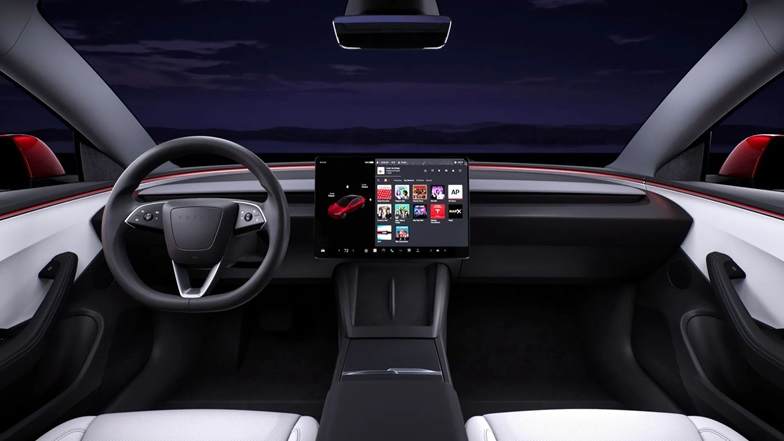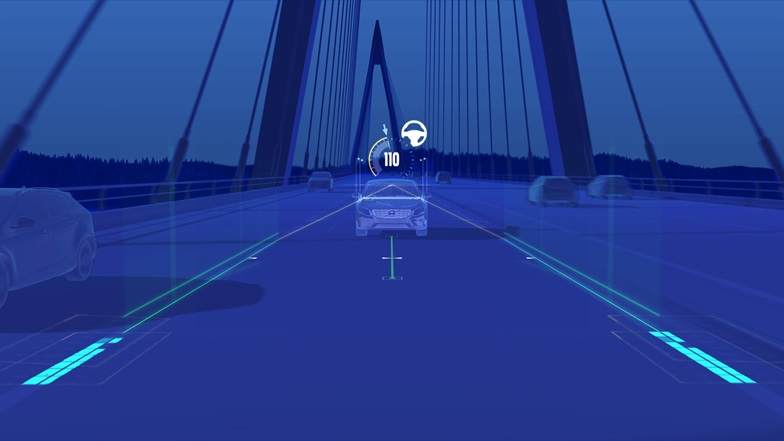Tesla Autopilot: Convenient but Distracting? New Studies Raise Concerns About Driver Attention
Tesla Autopilot, hailed as a step toward the future of self-driving cars, has come under scrutiny again.
Tesla’s Autopilot, hailed as a step toward the future of self-driving cars, has come under scrutiny again. A recent study by the Insurance Institute for Highway Safety (IIHS) found that drivers using this and other driver-assist systems tend to become more distracted over time. Let’s break down why this happens, what it means for drivers, and how Tesla’s system compares to other brands like Volvo.

Driver-Assist Systems: Helpful but Not Foolproof
Driver-assist systems, like Tesla Autopilot and Volvo’s Pilot Assist, are designed to make driving safer by reducing the chances of accidents. These systems use sensors and cameras to keep a car in its lane, adjust speed, and even stop the vehicle if a collision is imminent. Sounds great, right? However, there’s a catch. These systems are not fully autonomous, meaning drivers still need to keep their hands on the wheel and their eyes on the road.
Key Point: Tesla Autopilot is a hands-on system, not a hands-off solution.
The IIHS study shows that drivers often become complacent while using these systems, engaging in distracting activities like checking their phones, eating, or even zoning out. This behavior tends to increase as drivers get more comfortable with the system, leading to a false sense of security.
Tesla vs. Volvo: A Comparative Study
Two separate studies examined how drivers behave when using these advanced driver-assist systems. One focused on Tesla’s Autopilot in the Model 3, while the other looked at Volvo’s Pilot Assist in the S90. Here’s what researchers found:
| System | Vehicle Used | Behavior Observed | Driver Tendencies |
|---|---|---|---|
| Tesla Autopilot | 2020 Tesla Model 3 | Drivers quickly adapted to avoid the system’s attention warnings. | Distracted behaviors increased as drivers learned to “game” the system. |
| Volvo Pilot Assist | 2017 Volvo S90 | Drivers engaged in more non-driving activities (eating, phone use) over time. | Drivers were more likely to multitask while using the system, even when unassisted. |
While both systems are marketed as “driver-assist,” they are far from perfect. Tesla drivers, in particular, learned to “hack” the system by figuring out the timing of the attention reminders, meaning they could avoid warnings and continue their distractions. Volvo’s system didn’t fare much better, with drivers increasingly engaging in non-driving activities.
Important Point: Drivers tend to misuse both systems as they become more familiar with them.

What’s the Real Problem? False Confidence
So why do drivers misuse these systems? It boils down to false confidence. Tesla Autopilot and similar systems give the impression that they are more capable than they really are. In reality, these systems require constant driver supervision. Unfortunately, as the studies show, drivers begin to let their guard down once they get comfortable.
The IIHS warns that these driver-assist systems need stronger safeguards to prevent misuse. For example, Autopilot’s attention warnings (designed to remind drivers to stay engaged) can be easily manipulated, allowing drivers to continue distracted behaviors.
Fact: The more drivers trust these systems, the more likely they are to become distracted.
The Myth of Full Self-Driving: Tesla’s Misleading Label
One major issue with Tesla is its labeling. Tesla markets its “Full Self-Driving” (FSD) feature, which implies the car can drive itself, but that’s far from reality. In fact, the system isn’t fully autonomous. The U.S. government has called out Tesla for this misleading name, and in 2023, Tesla had to recall the FSD Beta system due to safety risks. Despite this, the company continues to use the term, contributing to confusion among drivers.
What’s Being Done to Address This?
To improve safety, the IIHS suggests that more rigorous monitoring systems should be installed in cars. These could include better driver monitoring technology to ensure drivers stay focused on the road. Current systems rely on steering wheel sensors or cameras to check if the driver is paying attention, but as the study shows, these can be bypassed.
In March 2024, the IIHS completed testing of 14 driver-assist systems across nine different car brands. The conclusion? Most of these systems are too easy to misuse. Tesla’s Autopilot was specifically noted for being more prone to creating a false sense of security compared to other brands.
Takeaway: While driver-assist systems can make driving easier, they are not foolproof and require constant driver engagement.
How Does Tesla Stack Up Against Competitors?
When it comes to driver-assist technology, Tesla is one of the most recognizable brands, but how does it compare to other automakers? Here’s a quick look at some key differences:
| Brand | System | Autonomous Level | Key Issues |
|---|---|---|---|
| Tesla | Autopilot & Full Self-Driving | Level 2 | Drivers can easily misuse attention warnings, system name is misleading. |
| Volvo | Pilot Assist | Level 2 | Drivers engage in distracting behaviors like phone use or eating. |
| GM | Super Cruise | Level 2 | Hands-free driving system but still requires driver engagement via monitoring. |
While all of these systems are considered “Level 2” in terms of automation, meaning they require driver supervision, Tesla’s system stands out for its ability to be easily misused.
Convenience or Risk?
Driver-assist systems like Tesla Autopilot offer a glimpse into the future of driving, but they come with significant risks if misused. The studies by IIHS and MIT show that drivers tend to become more distracted over time, which can negate the safety benefits these systems aim to provide.
As these technologies continue to evolve, it’s crucial for both manufacturers and drivers to understand their limitations. Manufacturers need to create better safeguards to prevent misuse, while drivers must remember that, for now, no car on the road is truly autonomous.
Final Thought: Tesla Autopilot may make driving easier, but it’s not a substitute for paying attention.
Related Post



